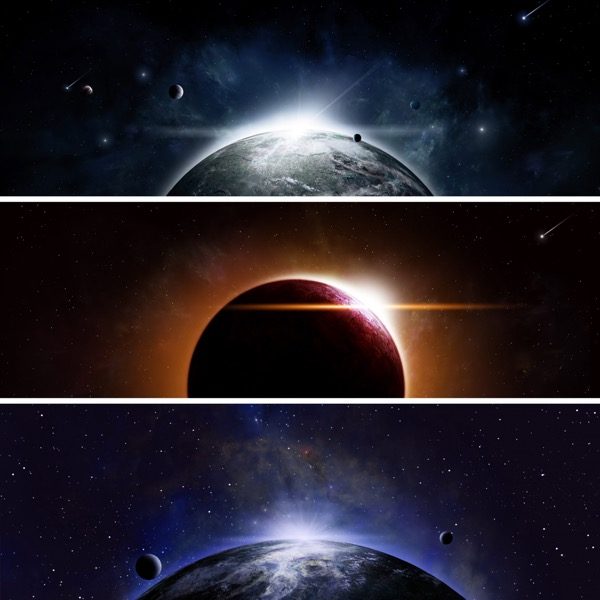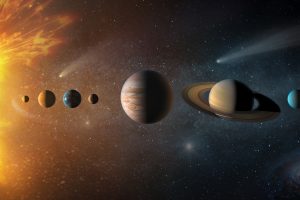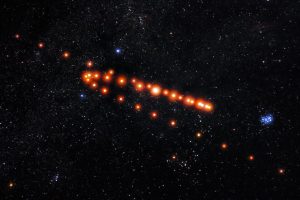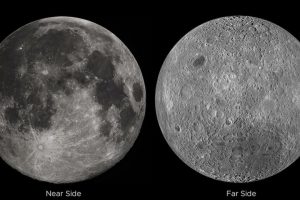
© Shutterstock
It is estimated that a single place on Earth experiences a total solar eclipse approximately once every 350 years. And on April 8, 2024, people across North America are set to witness this magnificent celestial phenomenon. From Mazatlán, Mexico to Dallas, Texas to Niagara Falls, Canada, an estimated 31 million people will be on the path of totality to witness our Sun be completely concealed by the moon. Millions more will be on the path to observe a partial solar eclipse across the North American continent.
For centuries, eclipses have captivated people. These events bring a unique allure and are an awe-inspiring experience. Regardless of anyone’s particular belief, the phenomenon evokes a profound understanding that our world and our universe are far greater and more expansive than day-to-day life. It makes you realise that our world is just a small part of a vast universe.
Estimates from NASA and archaeologists suggest that the earliest recorded solar eclipse in human history may have occurred more than 5000 years ago. Cave markings from rocks nestled in the rolling hills of County Meath in Ireland show rings of circles that resemble stages of an eclipse. However, eclipses have been described in many different parts of the world throughout history and draw significant interest, regardless of which century or location they occur.
Coincidentally, this year’s total solar eclipse is set to occur on 8th April – within the last few days of the holy month of Ramadan. In this month of Ramadan, a lunar eclipse also occurred in the Americas and parts of Europe, on March 25, 2024. A double eclipse during Ramadan is not common, but has occurred at different times throughout history. However, 130 years ago in 1894, a double eclipse occurred that fulfilled a grand prophecy of the Holy Prophet of Islam (as) regarding the Imam Mahdi (as). It came as a mesmerizing sign from the heavens, to show that God who could conceal the light of the sun, would illuminate and show His Divine support to His chosen one. Its astronomical occurrence was not miraculous per say, but its religious significance and timing signaled to the world that the time had arrived for the next era of Islam.
(People gaze up at the sky to view a Solar eclipse in 2017. Image obtained from the NASA Goddard Space Flight Centre.)
Science behind eclipses
Eclipses occur when the Sun, the Moon, and the Earth align in a specific way. The exact order of this alignment determines what type of eclipse that a viewer on Earth will experience. Since the Moon’s orbit is slightly tilted from Earth’s, eclipses occur occasionally rather than every month as the Moon makes its way around our planet.
There are two major types of eclipses: lunar and solar. A lunar eclipse occurs when the Earth passes between the Moon and the Sun, causing the Earth to cast a shadow on the Moon. Lunar eclipses occur during the full moon, and a viewer on Earth will experience a dimming of the Moon. Sometimes, the Moon’s surface will even appear reddish during a lunar eclipse because sunlight filtered through Earth’s atmosphere will reach the Moon’s surface and dimly illuminate it.
A solar eclipse, on the other hand, refers to the phenomenon in which the Moon passes between the Earth and the Sun, blocking out a fraction of the Sun’s light. Solar eclipses occur during the new moon phase.
There are also a few different subtypes of solar eclipses. A total solar eclipse occurs when the Moon completely blocks the face of the Sun. The phenomenon is particularly mesmerizing as here on Earth, we experience a rapid darkening during the day as the Moon covers the light from the Sun. The phenomenon can affect animals and wildlife, as the shift in brightness might affect birds, fish, farm animals, and even household pets. As light strangely begins to vanish in the middle of the day, pets might become spooked by the sudden darkening; farm animals may begin their night-time behaviours like eating, sleeping, or grooming; birds may start singing; some fish may start biting since they typically feed at dawn and dusk; and crepuscular animals may become active. In some places, the temperature may also drop by about 20 degrees in the temporary absence of sunlight.
(Image of Annular Solar eclipse from 2011. The Moon is directly in line with the Sun, however, it does not completely cover the Sun, so a ‘ring of fire’ is observable. Image obtained from NASA Goddard Space Flight Centre).
Other types of Solar eclipses include those classified as annular, where although the Moon and Sun are perfectly aligned, the Moon is not quite at a distance from Earth that it blocks all of the Sun, and so a portion of the Sun is visible outside of the shadowed portion, creating an outer ring of light. Hybrid solar eclipses occur when some areas of the Earth experience a total eclipse (completely block all of the Sun) while other areas experience an annular eclipse and are able to observe the ring of light. Hybrid eclipses are regarded as the most rare form of solar eclipses. Partial eclipses occur when the paths of the Sun and the Moon are not perfectly aligned. During a total eclipse, the areas on the Earth outside of the path of totality, experience a partial eclipse.
For our Earth-Moon-Sun system in particular, the fact that we can experience solar and lunar eclipses in totality is a cosmic wonder. The exact configuration, distances, and sizes of the Earth, Moon, and Sun relative to each other makes total eclipses possible. While the Moon is 400 times smaller than the Sun, it is also remarkably 400 times closer to the Earth compared to the Sun. This 1:1 ratio between size and distance makes total eclipses possible.
(Image shows progression of a total Solar eclipse from 2017. Image obtained from NASA Goddard Space Flight Centre.)
The Grand Prophecy of Eclipses Eclipses During Ramadan
Due to its cosmic spectacle, some religions regard eclipses as Divine signs in their own right. Islam never advocates that eclipses occur because of someone’s life or death. The Holy Prophet of Islam (sa) said, “The sun and the moon are two signs amongst the signs of Allah. They do not eclipse because of someone’s death or life. So when you see them, invoke Allah and pray till the eclipse is clear”. (Bukhari)
However, the Sun and the Moon are celestial objects used for marking time. The coming of the Messiah and Mahdi was prophesied by the Holy Prophet (sa), and the time period of his coming were described in several narrations or hadith. One of these narrations is regarding the occurrence of a specific set of eclipses. This narration is recorded in Sunan Al Daraqutni (a collection of hadith compiled by the Imam Al-Daraqutni)
انّ لمھدینا اٰیتین لم تكونا منذ خلق السماوات والارض۔ ینكسف القمر لاوّل لیلۃٍ من
رمضان وتنكسف الشمس فی النّصف منہ۔
This hadith is translated and further explained by the Promised Messiah (as) as follows:
“There are two Signs for our Mahdi, and ever since God created the heavens and earth, these two Signs have never appeared in the time of any other Appointed One or Messenger. One of them is that in the time of the Promised Mahdi, during the month of Ramadan, the lunar eclipse will take place on its first night—i.e. on the thirteenth [night]—while the solar eclipse will take place on the middle of its days—i.e. on the twenty-eighth day of the month of the same Ramadan. Such a phenomenon has never occurred at the time of any Messenger or Prophet since the beginning of the world. It is destined to occur only at the time of the Promised Mahdi.” (Haqiqatul Wahi, pg 243)
The prophecy was explicit, that during the time of the Mahdi there would be two eclipses – both of the moon and the sun – specifically during the month of Ramadan and during 2 specific dates. The prophecy did not imply that such an event, albeit not common, could only occur during the time of the Promised Mahdi (it is not exclusive to a specific time period), rather it indicated that the occurrence of eclipses would occur as a sign for the Promised Mahdi and his claim. There needed to have been a well recognized claimant professing to be the Mahdi for the cosmic occurrence to be regarded as a sign – otherwise dual eclipses during Ramadan have occurred at different times in history and will continue to occur. For it to be a sign, the person claiming to be the Imam Mahdi had to have made the claim before the sign occurred. It would not be a sign otherwise, because anyone can start claiming to be Mahdi after seeing the sign.
Indeed, Mirza Ghulam Ahmad (as) had an extensive and well published record of his claims. He had claimed to be the Divine Reformer in 1882, founded the Ahmadiyya Muslim Community in 1889, and by 1892 had declared that God had appointed him as the Promised Messiah and Mahdi foretold by the Holy Prophet Muhammad (sa) as well as all other major religions of the world.
Nearing the end of the 19th century, as the community of the Promised Messiah (as) continued to grow, some religious clerics criticized the Promised Messiah (as) that if he was the Mahdi, why had the dual eclipses not occurred. But the pundits lost all clout when an awe-inspiring sight took place in the holy month of Ramadan in 1894. God Himself shattered all of the pundits’ objections. Moreover, newspapers from the time reported the excitement of people that the eclipses would take place during the month of Ramadan and its significance for the coming of the Mahdi- Read Ramadan and the Link to the Imam Mahdi.
The Eclipses of 1894 and 1895
On March 21, 1894 (13th night of Ramadan, 1311 as per the Hijri calendar) a partial lunar eclipse occurred in many parts of the world, including in India. Later, on April 6, 1894 (28th of Ramadan) a hybrid solar eclipse occurred in most of Asia. In this type of eclipse, some places along the path of the eclipse experienced a total eclipse while others experienced an annular eclipse. As shown in the figure below, most parts of Asia were on the path of the solar eclipse.
(Figure from the NASA Catalog of Eclipses. The red line shows the central path of the hybrid solar eclipse and the green solid lines show the area of the northern and southern limits where the eclipse could be observed. A hybrid eclipse is where along the central path, some areas see a total eclipse, while others see an annular eclipse.)
Following the occurrence of these eclipses, many people joined the community of the Promised Messiah (as). For them, the sign was a direct fulfilment of the prophecy made centuries ago by the Holy Prophet Muhammad (sa). The dates of the eclipses matched precisely what had been mentioned in the hadith and the eclipses could be observed in the area where the claims of the Promised Messiah (as) had become well-known. The phenomenon had a deep impact on those faithful people who were yearning for a sign.
A year later, two eclipses occurred during the subsequent Ramadan in the Western hemisphere. A total lunar eclipse occurred on March 11, 1895 and a partial solar eclipse on March 26, 1895 (Ramadan 1312 as per Hijri calendar). Scientific American discusses these two eclipses observable in the Western Hemisphere in its article ‘Eclipses of 1895, published in its April 1895 issue):
“The eclipses of the 11th and the 26th of March, or of the vernal equinox, are of greater interest than those, their counterparts, of the autumnal equinox, occurring on the 4th and 18th of September. The partial solar eclipse of the 26th of March is not visible in the south east of England – only as a mere fractional phenomenon in the north and west of Britain – and will be but of little general interest here, though it may attract some notice from travelers crossing the Atlantic on that date, as about a third of the sun’s disk will be hidden during the maximum phase to be seen on the Canadian side.”
A Time for Reflection and Prayer
This year’s upcoming solar eclipse is sure to excite and create a buzz. Eclipse glasses continue to fly off the shelves in anticipation of the celestial phenomenon as for many, this may be the only time they will be able to witness a total Solar eclipse. While millions will look to the sky in wonder and amazement, for Ahmadi Muslims, the eclipse will have a deeper meaning. For the faithful, it will transport them back in time to the day when it felt as if God Himself had spoken directly to people from the heavens and had announced that the time of His chosen one had arrived. Although these eclipses during this year’s Ramadan are not related to the prophecy, they prompt an opportunity for reflection and prayer. The current Head of the Ahmadiyya Muslim Community, His Holiness, Hazrat Mirza Masroor Ahmad (aba), stated in 2015, following a solar eclipse occurrence in that year:
“Ahadith tell us that solar and lunar eclipses are special signs of God and according to the Holy Prophet (sa) they were a great sign of the advent of the Promised Messiah (as). And indeed eclipses of the sun and the moon were witnessed in the West as well as the East in corroboration of the Promised Messiah (as) which makes them very significant for the Jama’at. Today’s eclipse was not a sign of the advent of the Promised Messiah but it certainly draws one’s attention to the eclipse that took place during the advent of the Promised Messiah (as).”
About the authors:
Sinwan Basharat is a researcher with a background in molecular genetics and epidemiology. He works for a research agency in Ottawa, Canada.
Dr. Munazza Alam is an astronomer, National Geographic Young Explorer, and staff scientist at the Space Telescope Science Institute in Baltimore, MD.
They both serve as Deputy Editors for the Science Section in The Review of Religions.




Add Comment